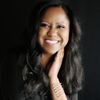
Passenger waiting for a train.
I love seeing new products hit the shelves or dominate my Facebook feed. I’ve even chosen to focus my graphic design skills around helping inventors hit the market with a bang.
Since I’ve been a graphic designer for nearly a decade, I’ve seen a lot of trends – the most prominent being a formal corporate facade, complete with a 2-color logo, buttoned-up messaging, and photos of “important” people crossing their arms with contrived smiles.
But the most interesting of late has been the evolution of the imperfect, relatable, personal brand. The brand that uses real photos of actual employees, the brand that live streams unscripted, and the brand that doesn’t shy away from #realtalk complete with f-bombs.
At first, this new trend caught me off-guard. These brands had to be committing entrepreneurial suicide, but when I discovered the book “Fascinate: How to Make Your Brand Impossible to Resist,” by Sally Hogshead, I realized I had it all wrong:
“When you stop trying to be all things to all people, you can stop worrying about being liked and start building relationships that allow you to be loved. If you are not creating a negative response from somebody, you’re probably not very fascinating to anybody.” – Sally Hogshead
Sally Hogshead is a former advertising executive, best-selling author, and world-class branding expert who created a profiling tool, called the Fascination Advantage, that finds your own natural advantage of persuasion.
Just admit it...
Donald Trump didn’t win because he was “better” than Hillary Clinton in terms of the credentials we expect someone running for the highest office in the land to have.
He won because he was different. With no political or military experience, he ran against his party, the media, the establishment – he ran against everything that was status quo and came out victorious.
From the start, Clinton lacked charisma. She came off as rehearsed, boring, and represented a continuation of the past 8 years with only a proverbial logo change.
Let’s compare this to shopping:
You’re walking into the grocery store to pick up your go-to laundry detergent that’s always been “good enough.” This detergent has been around for years with just a few slight changes in packaging. It’s still recognizable, predictable, and safe – you know the job it will perform on your clothes every single time.
But lo and behold the grocery store manager decides to put a brand new detergent on a display endcap, front and center. The packaging goes left field of what you’re used to ignoring, it makes bold promises, and the price is just right.
Gazing in awe, you quickly google search this new brand to find any potential reviews on your smartphone – no credentials yet.
So what do you do? You say, “Eh, what the hell,” and put that bad boy into your cart. If it doesn’t work, then you can simply finish the bottle, give it away, or throw it away. Point is, you’ll never have to relive the experience again.
You just read Trump’s exact campaign strategy. Even if you’re a loyalist to a cause, change is exciting…it’s fascinating.
Bernie Sanders was a fascinating brand next to Clinton; but unfortunately, the DNC clique, arrogantly force-fed Hilary down our throats…to their detriment.
“But it was all about analytics with them [Clinton Campaign],” the DNC source says. “They were too reliant on analytics and not enough on instinct and human intel from the ground.” – usnews.com
There’s a shift happening in branding. People don’t want to support corporate entities with their slick logos and multi-million dollar ad budgets.
They want to support the “little” guy who overcame all odds to build a business from the ground up. They want to support the American dream.
People want real and raw – human is the new black.
As a brand, Hillary Clinton stated that she had both a “public and private position” and even divulged that she was “kind of far removed” from the lives of the middle class. She went all in on her corporate persona when the people craved her private one – Americans saw right through her marketing.
This was a far cry from Trump who was upfront in the beginning by admitting that he wasn’t politically correct, that he was funding his own campaign against status quo, and drilled in a controversial slogan that proclaimed America wasn’t great, but it could be again.
Even all of his many campaign blunders just reiterated the fact that this man was holding nothing back for the sake of being palatable.
If there’s anything consumers want to see in your brand, it’s the truth of what they’re getting before they make the purchase. And boy oh boy, did America know exactly what it was getting before it purchased Trump.
How big brands get it wrong:
Sprint has launched a new campaign with Paul Marcarelli, Verizon’s former “Can you hear me now?” pitchman as their new spokesman. Here’s his salty commercial pitch:
“But when it comes to saving money … Sprint is by far the best choice for consumers. You get a highly reliable network and save 50 percent off most of the rates other national wireless carriers charge. Now that is noticeable.” – adweek.com
How does that knife in the back feel?
Too bad its impact will only cause Verizon a paper cut at best. The worse way to distinguish yourself from a competitor is by price as then it starts a race to the bottom.
And among the four powerhouse cell phone carriers (Verizon, T-Mobile, AT&T, and Sprint), Sprint already takes that spot.
Ouch.
When your brand is different and not better, you don’t have to compete on price, popularity, or even quality.
Now who’s really making Verizon bleed? T-mobile leads the Big Four with “customer satisfaction” in a survey of 90,000 subscribers by Consumer Reports.
T-mobile positions their brand as the UNcarrier, just as Trump positions himself as the UNpolitician – all of us have a secret anarchist bubbling under the surface.
“Why would our brains throw us into a temporary insanity? What’s the evolutionary purpose for this whacked-out loss of control? To understand why fascination grasps us so irresistibly, keep in mind the illogic of flirtation, and the lunacy of love. Fascination, as we’ve seen, is a visceral and primal decision-making process, one that’s largely involuntary.” – Sally Hogshead
So what’s the takeaway of this election and how to manage your brand going forward?
Take a ride on the #trumptrain
Or as Kimra Luna, a personal branding and online business strategist who clocked in a near million dollars in revenue in less than a year proclaims, “Be true. Brand You.”
Don’t focus on how your product features are better (mention them, of course). Pick an emotion you rock well and hone in on that sucker.
Are you in the baby industry plagued by pastels and the picturesque family life?
Bunmi Laditan wrote a satirical guide to parenthood about how “Toddlers are A**holes: It’s not Your fault.” It brings our guards down and sends the perfect message that being an imperfect parent is okay since toddlers, no matter how cute, are inherently assholish.
Poo-Pourri takes the once “naughty” talk about everyday bodily functions and puts a hilarious spin on it. Result? I can be a well-mannered woman, drop THE motherload, and not feel ashamed about it because #everyonepoops. My own brand shows parents how to clean crap in a snap.
In the beauty industry plagued by excessive Photoshop retouches and unrealistic body standards, Dove launched a massively successful campaign called ‘Real Beauty,’ which showed women that confidence comes from valuing the true beauty within themselves.
Dove introduced us women with normal features that those “valley girls” we love to hate would have labeled flawed. The brand stood out and showed up.
Don’t be better. It’s far more advantageous to be different.
“The reality, however, is that “better” is not better. Better is a mirage. It keeps you chained to the same way of working as your competition. Better is temporary. Better is a flimsy edge that can be toppled in a millisecond by someone with a bigger following, a lower price, a more convenient location, a fancier degree, a shinier award, a newer technology, a more skillful skill. Better is not always better...You aren’t necessarily better than your competition. But you are already different.” – Sally Hogshead
It doesn’t matter which side you are on, I think we can all agree that the feat President-Elect Donald Trump pulled off was simply...well, fascinating.
____________________________________________
Sources:
